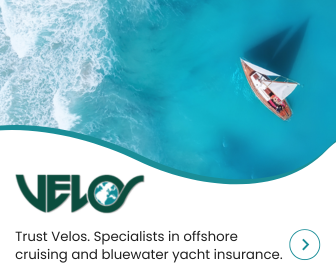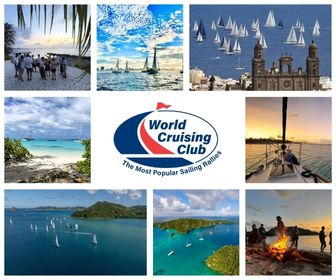Norway - Facts
Norway FAQs
Pre-Arrival Boat: All foreign (including EU) vessels entering Norway should report their arrival 24 hours in advanced via the local police district where they plan to arrive or via SafeSeaNet Norway (SSNN). See Clearance for details.
Pre-Arrival Crew: If the crew are non-EU/non-Schengen Waiver eligible, then generally a visa will likely be needed. See Immigration for details.
Where can I enter? Click on the anchor symbol in the blue “Explore Country” drop down, to see ports of entry.
Are fees high to enter by yacht? There are not normally any fees for clearance formalities. See Fees for further info.
What security concerns should I know about? Norway is a very safe country for cruising boats. See Security for more info and details on temporary Border Control measures.
Norway Facts for Sailors
- Norway is a country located in Northern Europe. The capital and largest city is Oslo.
- Norway occupies the western side of the Scandinavian peninsula, a mountainous forested land, with deep dramatic fjords cutting into the coast. This wild grandeur makes Norway one of the most beautifully scenic countries in the world.
- The country has a population of 5.4 million people and the official language is Norwegian.
- Norway is not an EU Member State but it is part of the European Economic Area (EEA) and is part of the Schengen Area.
- The currency is the Norwegian Kroner (NOK).
- The timezone in Norway is UTC (+1). Daylight saving time UTC (+2).
- Although the number of cruising boats visiting the northern part of Norway is still relatively small, this area often has warmer and drier summers than further south, with the added advantage of many more hours of daylight. See Weather for more details.
- A chain of islands stretches parallel to the western coast and extends almost as far as the North Cape. They provide a huge amount of sheltered water for cruising and many safe anchorages.
- The majestic fjords indenting the mainland coast cannot fail to impress, but as the anchorages in many of the fjords are extremely deep, forward planning is required to find a quay or pontoon to tie up to.
- The south and east coasts of Norway are very active boating areas and have more crowded destinations. The scenery is not so dramatic but still most attractive.
- Popular destinations beyond the Arctic Circle include Spitsbergen (Svalbard) and, if not quite so adventurous, the Lofoten Islands.
- There are relatively few commercial marinas still, but docking or mooring provisions for visiting yachts can be found in nearly all ports, although they are not always available for boats over 13m. Some docks may be privately owned and permission to use it should be obtained first. Anchoring is free everywhere.
- Due to the fishing and oil industries, repair facilities are fairly wide-spread. In particular, centres such as Oslo, Stavanger, Haugesund, Alesund, Stord and Bergen in the south, and Harstad, Bodo and Tromso further north.
- Provisioning is good everywhere, but the price of food and eating out is generally high. Fuel is usually available in all ports. LPG containers may be exchanged (not re-filled) only in the main centres, and it may be necessary to have the right adaptor. Not all vendors stock all sizes.
- Although winter sailing appeals to some hardy souls, it worth noting that most facilities (including water and electricity) are unavailable during that period in many ports. For details of services for cruising boats see Yachting Essentials.
- An essential resource when sailing here is The Norwegian Pilot Guide – Sailing Directions.
Read and Post Related Comments
If you have information for this section, or feedback on businesses used, please let us know at editor@noonsite.com. We also welcome new information about businesses you have used (see Related Businesses).
Next Section: Profile: Security
Related to following destinations: Norway
Country Navigation
Courtesy Flag Discounts


YachtFlags.com provides high quality courtesy flags that are manufactured in durable Knitted Polyester fabric. Knitted so that the fabric itself does not deteriorate in the constant movement that marine flags are usually exposed to, and polyester so that the flag does not weaken in the strong UV-light usually found in the main sailing areas of the world.
YachtFlags.com offers a discount to Noonsite members.
Use the coupon code NOONSITE-5A2B when checking out to get 10% off today.
Buy Now On YachtFlags.comMain Ports - Norway
Courtesy Flag Discounts



YachtFlags.com provides high quality courtesy flags that are manufactured in durable Knitted Polyester fabric. Knitted so that the fabric itself does not deteriorate in the constant movement that marine flags are usually exposed to, and polyester so that the flag does not weaken in the strong UV-light usually found in the main sailing areas of the world.
YachtFlags.com offers a discount to Noonsite members.
Use the coupon code NOONSITE-5A2B when checking out to get 10% off today.
Buy Now On YachtFlags.comFormalities
Courtesy Flag Discounts



YachtFlags.com provides high quality courtesy flags that are manufactured in durable Knitted Polyester fabric. Knitted so that the fabric itself does not deteriorate in the constant movement that marine flags are usually exposed to, and polyester so that the flag does not weaken in the strong UV-light usually found in the main sailing areas of the world.
YachtFlags.com offers a discount to Noonsite members.
Use the coupon code NOONSITE-5A2B when checking out to get 10% off today.
Buy Now On YachtFlags.com





As a 49 foot British sailing vessel wanting to sail from England To Norway and spend several weeks cruising along the coast heading towards Sweden and thence to Denmark Germany the Netherlands and back to the UK we looked carefully at the immigration requirements. This is our experience.
In summary our sailing experience in Norway was extremely positive. We enjoyed a very easy and pleasurable few weeks in Norway and would definitely return. During our stay we did not encounter a single other yacht of any description that was British or from any other country outside the Schengen area.
The Norwegian government website indicates that yachts arriving from outside of Schengen should register, in the first instance with SSNN (safe Sea Net Norway) although my research indicated this might be tricky and also indicated that reporting and obtaining permission to move and drop anchor was really important.
After failing to complete the registration process for SSNN, which seemed to be set up for large commercial vessels only, my next move was to contact the police authority of the district where we intended to make landfall – Stavanger csc@ccss.mil.no.
We were then required to submit a copy of our boat registration certificate, confirming our length to be 14.95 metres. If we had been just five centimetres longer -15 metres- I was informed that we would have to register with the military. A swift e-mail reply from the authorities confirmed that unless we had “special capacities” our vessel was not required to report in to the Coastal Surveillance. We were told that if we had been required to report in we could do so without the SSNN registration by using the e-mail given above, but we would still have to report in an ETA and destination and obtained permission in order to move the boat.
The last instruction was to call or e-mail the police on arrival in Stavanger and the sender wished us a pleasant voyage.
It was an interesting and largely enjoyable sail from Hartlepool in England (before departure we informed the UK authorities of using a sPCR form from the UK government web site); past wind farms, drilling rigs and oil and gas platforms, and with a fair number of cargo, fishing and pleasure vessels.
As we approached Stavanger I telephoned the police on the given number to report our imminent arrival I was told they would call back in due course we tide up in Stavanger guest haven a small self-service Marina situated conveniently in the heart of the Old Town and immediately adjacent to the petrol museum for the record this cost 250 Norwegian kroner per night for our 14.95 metre vessel which included free access to the shower and washrooms and also the laundry.
Our next contact from the police was to arrange a time for them to visit us and stamp our passports. We were offered a morning visit the following day and were advised it was fine for us to leave the boat in order to explore, eat, visit the museum and buy provisions which we did keeping our yellow Q flag flying.
Two very pleasant lady police officers came to a vote the following day they sport asked us if we understood the rules of Schengen in terms of the time limit and advising us that whatever country we took parted back to the UK from we should ensure that we had our passports stamped. Interestingly, the fact that they had taken 24 hours to visit us gave us an effective free Shengen day.
They reassured us that we did not have to report in and with that they wished us a good day and left it appeared that they had not often if ever had to perform this particular duty.
And that was it. A few days later at the small port of Tananger, we were approached by some police. We offered them sight of our stamped passports and boat papers and they left us with a cheery wave moments later.
We spent three happy weeks cruising the Norwegian coast finding it beautiful easy and friendly wherever we went. We have just left Norway en route to Sweden.
Hi Clare,
Thank you for this very informative comment. It really helps our users to know what to expect when arriving in Norway! We are really glad to hear that you had such a pleasant time sailing Norway and what a relief to be under the limit for the new reporting requirements. (For those over 15m see our Cruiser Report of first-hand experiences of cruisers navigating the new regulations here – https://www.noonsite.com/report/norway-navigating-the-new-regulations/)
I recently updated our Norway Clearance – https://www.noonsite.com/place/norway/view/clearance/ – page with information on how to register with SSNN through the helpdesk but as you note, it really isn’t necessary and an email to the Police Station where you plan to land is sufficient.
Kind regards,
Megan
Researcher / Sub-Editor
noonsite.com
Clearance August 2024:
We tried to set up a SeaSafe account, but didn’t manage because it seems to be set up for professionals only. We arrived from Scotland without prior notice, then called +4702800. We were transferred to a border force officer, who informed us that we should have notified them by e-mail prior to coming to Norway. The e-mail address for arriving in Agder Province (Southern Norway) is: Agder.grensekontroll@politiet.no
No one needs to take a test before or after entering Norway. The info on here is dated.
Thanks for letting us know Steve – really helpful. Yes I see rules changed last week and we’ve updated the biosecurity section accordingly.
The best pilot guide we used was, in fact, an app downloaded to our iPad and phone: https://www.harbourguide.com.
Norway is very capable when it comes to gas refilling. We found that our existing UK Calor bottles could be refilled with Propane by a professional for the same or less than in the UK. We did not have to buy a Norwegian bottle.
Rorvik and Harstad are where we filled our bottles but it seems like you can do it in most major towns. This site is useful: https://www.mylpg.eu/stations/norway/
To be more precise phasing out is a process as I have explained here: http://59nord.pl/en/radio-2/
It will be finished at the and of the current year, so there is still a good chance that this season visitors to Norway may be able to use their FM receivers.
When it comes to weather forecasts I have elaborated on that here: http://59nord.pl/en/weather-forcast-on-nrk-radio/ and here: http://59nord.pl/en/marine-radio-weather-forecast/
I want to highlight that Norwegian radio has shut down their FM senders from 2017 and the only way to access public radio is by having Dab+ in your boat as this is the only transmission remaining.
To access weather, check VHF Ch 16 where they inform which working channel they will broadcast the weather every day at 9:00, 12:00, 15:00 and 21:00 local time.
Being Norwegian, I would like to expand on your statement about all shoreline being private (Restrictions section).
Few countries, if any, give a sailor better access than Norway. The public intention is to keep all shoreline within 100m open to the public. Deviations from this rule are unfortunately many. Some because of existing buildings when the law was passed, some because of too good lawyers. But the general rule is that you can freely use the shoreline.
You can anchor outside the private property. You can take your dinghy ashore anywhere that is not obviously private. You can spend the day at the shore, collect firewood, and pick berries. All this without asking anybody for permission.
Any “private” signs are most often illegal. With exceptions for the densely populated southeastern part of Norway, the vast majority of the shoreline is free to use.